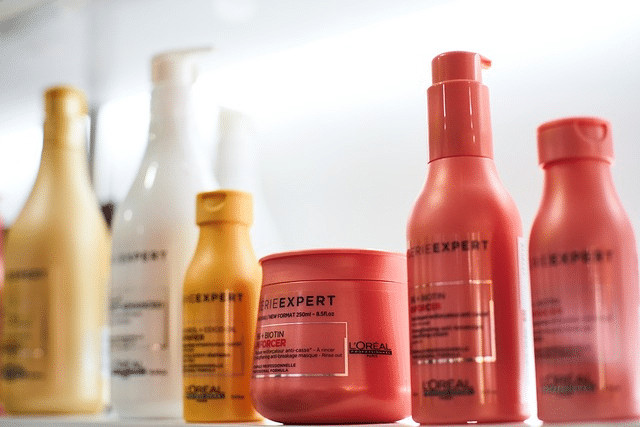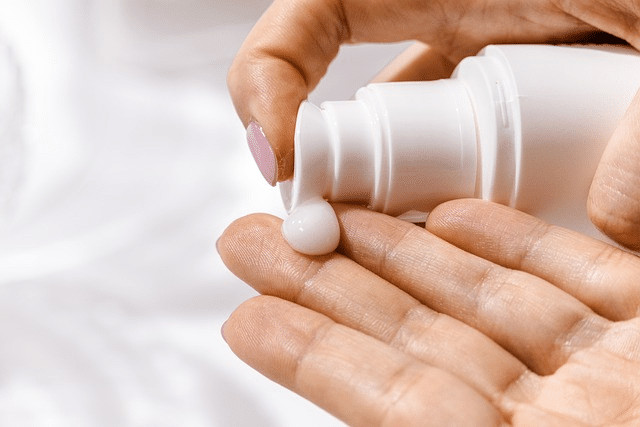So, you’ve taken the plunge and had hair transplant surgery. Congratulations! But now, the real work begins – ensuring the success of your transplant surgical procedure. After all, caring for your hair and scalp post-transplant is crucial for optimal results.
Like most surgical procedures, this isn’t a one-and-done type of thing. Far from it. There’s a lot of long-term care to see the best results and ensure that the newly transplanted grafts in the donor site not only survive but thrive. At Best Hair Transplant, we treat transplants a lot like dentistry. You can’t just get a cleaning and expect your teeth to be fine forever. So too it is with hair transplant procedures.
Let’s talk about essential tips for maintaining head health as new hairs begins to grow. We’ll discuss promoting follicular growth, managing common post-transplant hair concerns, and the use of hair products after hair transplant surgeries that most patients find success with. Are you ready to give your transplanted hair the best possible start? Let’s dive in!
Key Takeaways
Choose chemical-free shampoos and nourishing conditioners for post-transplant care
Apply conditioner and special ointments cautiously, watching for reactions and sensitivity
Massage your scalp with oil or moisturizer regularly to keep it healthy after hair restoration
Start washing hair properly and avoid scrubbing newly transplanted grafts
Wash with warm water instead of hot water and avoid too much scrubbing
Follow expert recommendations such as product selection, follow-up appointments & ongoing hair care for successful transplantation
Selecting the Ideal Hair Product After Hair Transplant

Choosing suitable hair products after your transplant is key to ensuring optimal outcomes, particularly for individuals who have undergone hair transplantation. Your doctor may provide you with hair care products and a hair wash routine to aid the healing process and protect your new grafts.
Let’s discuss the benefits and features of chemical-free shampoos, nourishing conditioners, special ointment, hair wash, and growth-stimulating treatments ideal for post-transplant care in order to avoid hair loss.
Chemical-Free Shampoos
Chemical-free shampoos are a must for washing hair after a hair transplant. They’re gentle on the scalp and help protect the newly transplanted hair follicles from irritation or damage.
What makes these shampoos better than their chemical-laden counterparts? The absence of harsh chemicals and irritants means that they’re mild on the scalp, keeping the transplanted hair in good condition and minimizing the risk of scalp irritation or allergic reactions.
Look for shampoos with natural and organic ingredients. Make sure to check the label for any potential irritants. Remember the transplanted area is sensitive. Special shampoo options are best when you first begin to wash transplanted hairs and the donor area as well.
When you use any products on your head, make sure to carefully rub in the solution and wash with caution. Shampoo provided by your surgeon is typically the optimal choice. Be especially careful on your first wash.
Nourishing Conditioners
Conditioners rich in nutrients significantly contribute to post-transplant hair care, offering crucial nourishment to fortify hair roots and foster healthy growth. These products usually contain natural ingredients like oils, vitamins, and minerals that nourish and protect your hair. The benefits of using nourishing conditioners include fortifying hair roots, stimulating healthy hair follicle growth, and preventing scalp irritation and dandruff.
When selecting a nourishing conditioner, find one tailored to your hair type and avoid those containing harsh chemicals or fragrances that might irritate the scalp. There are plenty of formulated special ointment wash and conditioning options available. Just remember to carefully apply these as well.
Hair Follicle Growth Stimulating Treatments

Once the healing process is underway, treatments that stimulate hair growth might be a worthwhile consideration following a hair restoration procedure. Hair restoration treatment options like caffeine shampoo or Minoxidil can be used to boost hair follicles growth and improve the overall results of your transplant.
However, it’s essential to wait until after the initial healing period to use these treatments, giving your hair the best chance to grow. Always consult your doctor before introducing new treatments to your hair care routine to ensure they’re safe and suitable for you.
Proper Hair Care Routine for Transplanted Hair

A consistent hair care routine forms the foundation of a successful post-transplant regimen. Washing frequency, gentle drying techniques, and styling considerations all play a part in protecting and maintaining your new hair. Incorporating a proper hair wash routine is essential for optimal results, equipping you with the necessary knowledge to optimally nurture your recipient area.
Regular hair washing is a necessity after undergoing a hair transplant. For the first 10-14 days, it’s important to wash hair daily to keep the scalp clean and healthy. It’s crucial to be gentle with your hair during this time, as rough washing can cause damage to the delicate hair follicles.
Avoid powerful shower heads. Taking a quick body shower is the best option for you at this time as you don’t want to irritate the delicate grafts. After the initial two-week period, gradually return to your normal hair-washing routine, ensuring that you continue to care for your hair and scalp as it heals and grows. Start washing gently and take it easy as you ease back into normal treatment of your scalp.
Drying Techniques & Styling Considerations
The way you dry your hair post-washing is equally as significant as the washing process itself. Using gentle drying techniques can help prevent dislodging grafts or causing damage to the hair follicles. Here are some tips to achieve a proper hair dry:
Let your hair air-dry
Pat hair dry with a soft towel
Avoid using a hair dryer
Avoid rubbing your hair too vigorously
These techniques help prevent unnecessary strain on the transplanted hair and slow down the healing process. Remember, the key to successful hair transplant aftercare lies in being gentle and patient with your new hair, especially for hair transplant patients.
When it comes to styling your transplanted hair, caution is the name of the game. Avoid using heat and chemicals that could potentially damage the hair. After the initial healing period, gradually return to your preferred styling routine. However, always prioritize gentle methods and products that minimize the risk of damage to your new hair.
With a bit of patience and care, your transplanted hair will soon be looking its best after the hair restoration process.
Tips for Maintaining Scalp Health After Hair Transplant

Keeping a healthy scalp is a fundamental part of the care needed post-transplant. A healthy scalp promotes hair regrowth, reduces discomfort, and ensures the success of your transplant. This section will highlight the significance of scalp massages, sun protection, hydration, and nutrition following a hair transplant.
Scalp massages can be a game-changer for your post-transplant hair care routine. They help relieve post-transplant itchiness and discomfort while promoting blood circulation to the scalp, and supporting hair regrowth. However, it’s important to wait at least 10 days after surgery before massaging the scalp to avoid damaging the hair follicles.
When you’re ready to begin, use clean hands and gently massage your scalp using oil or moisturizer to enhance the experience and promote overall scalp health. Massaging in a delicate circular motion is best at first.
Sun Protection

Protecting your scalp from sun exposure is essential for a successful hair transplant. The scalp is more sensitive and vulnerable to sun damage, which can cause inflammation, redness, and irritation, slowing down the healing process and affecting the results.
Wearing a hat that covers the transplant area and applying sunscreen with an SPF of at least 30 are effective ways to protect your scalp from the sun. Advanced technology sunscreens now go well above SPF 100 and the more protection, the better.
Additionally, staying hydrated and wearing light, breathable clothing can help keep your scalp healthy and comfortable during the healing process, especially while scabs remain on the scalp.
Hydration and Nutrition
Maintaining hydration and a balanced nutrition are key elements in preserving scalp health and supporting hair follicle growth post-transplant Drinking at least two and a half liters of water each day is essential for keeping your scalp hydrated. A balanced diet rich in protein and essential nutrients helps support the growing of hair and overall scalp health.
Prioritize consuming a variety of protein-rich foods, and avoid processed foods, sugary snacks, and foods high in saturated fats to give your hair the best possible foundation for growth.
Common Post-Transplant Hair Concerns and Solutions

Even with all the necessary precautions, individuals who have undergone hair transplantation might still face some typical post-transplant hair issues. Understanding these issues and their solutions can help ensure a successful transplant and put your mind at ease.
This section tackles common concerns such as post-transplant itchiness, temporary hair loss, and slow growth of hair.
Post-Transplant Itchiness
Post-transplant itchiness is a common side effect of hair transplantation. To manage this discomfort, you can:
Wash your hair gently with warm water
Avoid direct sunlight on the donor area and recipient area
Change to a medicated shampoo or new shampoo recommended by your physician
Avoid scratching the affected area
Use saline solution or consult a doctor for persistent itching
Take antihistamines
These measures can help alleviate itchiness and irritation. Remember, it’s essential to consult your hair transplant physician before taking any medication or trying new treatments to ensure they’re safe and suitable for your specific needs.
Temporary Hair Loss/Shock Loss
Temporary hair loss is a normal occurrence after a hair transplant. This happens because some of the transplanted grafts may fall out due to the trauma of the procedure. While it may be concerning, remember that this is a temporary issue and should resolve on its own.
If you’re worried about excessive hair loss, consult your hair transplant surgeon for personalized guidance and reassurance.
Slow Hair Growth
Slow follicle growth after a hair transplant can be frustrating, but there are ways to address this concern. Growth-stimulating treatments, such as caffeine shampoo or Minoxidil, may boost hair growth and improve the overall results of your transplant.
Additionally, maintaining a healthy hair care routine, as discussed earlier in this guide, can help promote hair growth and ensure long-lasting transplant results. You’ll notice scabs fall off in this time and dried blood as well. These are normal parts of the hair transplantation process.
Remember, patience is essential when it comes to hair transplant recovery – give your hair time to grow and flourish.
Expert Recommendations for Hair Transplant Aftercare

Following expert advice on post-transplant care is key in guaranteeing the success of your hair transplantation as hair begins to take root and grow. This final section will recap the main points covered in this guide, with an emphasis on product selection, attending follow-up appointments, and sustaining continuous hair care.
Choosing the right hair care products for post-transplant care is essential for optimal results. Consult a specialist or your hair transplant center for recommendations on the best products for your specific needs. Suitable products for hair washes include chemical-free special shampoos, nourishing conditioners, and growth-stimulating treatments.
Follow-Up Appointments

Attending follow-up appointments is crucial for monitoring the progress of your hair transplant operation and addressing any concerns or complications that may arise. Regular check-ups with your surgeon will ensure that your scalp is healing properly and your hair transplant procedure is resulting in the desired hair growth. Don’t hesitate to consult your surgeon if you have any questions or worries during your recovery.
Continuing to care for your hair and scalp even after the initial healing period is essential for ensuring long-lasting results from your hair transplant. Follow the hair care tips and routines discussed throughout this guide, and always consult a specialist if you have any concerns or need additional guidance.
Taking proper care of your hair and scalp after a hair transplant is essential for ensuring the success and longevity of your transplant. By selecting the right products, maintaining a proper hair care routine, protecting your scalp from the sun, and addressing common post-transplant concerns, you’ll be on your way to enjoying the full benefits of your hair restoration journey.
Ultimately, stay patient, follow expert recommendations, and embrace your new, healthy head of hair!
Frequently Asked Questions
Can I use a hair product after hair transplant?
It is best to wait around 4 weeks before using any styling products on your hair after a transplant. Make sure to follow your doctor’s instructions regarding medications, antibiotics and bandages, so that you can safely start using hair product after the first two to three weeks.
Can I wash my hair with normal shampoo after hair transplant?
It is generally advised to use gentle baby shampoo or a special shampoo from your doctor for the first week after a hair transplant. Then switch to regular shampoo while you wash your hair. Avoid any harsh chemicals or styling products for at least two weeks post-surgery. Additionally, remember that little shampoo is necessary at this time.
For the best results after a hair transplant, opt for a gentle shampoo with natural ingredients, such as baby shampoo or herbal shampoo, like Aloe Vera. After two weeks, you can switch to a thin layer of caffeine-based shampoo. If possible, use a shampoo provided by your hair restoration clinic.
How soon can I wash my hair after a hair transplant?
It’s recommended to wait 2 weeks after a hair transplant before washing your hair, following the recommended routine. If you must wash your hair for some reason, use caution, especially on your first wash.
Can I use a comb for hair care after a hair transplant?
Not counting the grafted zone, patients may gently comb your hair from the first day after transplantation. However, do not touch the grafts themselves with your comb. It’s best to wait a week before using a comb for hair care after a hair transplant. Then you can wash and style your hair however you like.
